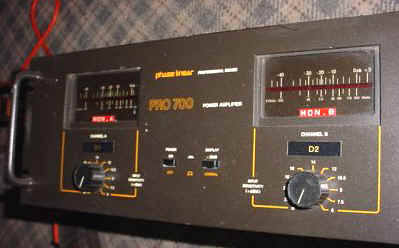Current output wasn't an issue, especially when loudspeakers of that era were normally 15 ohm sand 8 ohm was this modern new-fangled European fashion that good old UK didn't quite approve of...
This is important to keep in mind from an historical perspective. Anent the high current 'voltage limited' ML-2, the British loudspeaker scene, etc., an excerpt from a letter Julius Futterman wrote to Peter Aczel might be of interest--keeping in mind that Julius' amp would 'blow up' at 4 ohms, but could pump out 100 watts per channel into 16:
"Before transistor amplifiers the rated impedance of most high fidelity speakers was 16 ohms. In Britain practically all speakers were 15 ohms. There were sound reasons for this as, all other things being equal, a higher impedance speaker is more efficient and the crossover design is not as complex. We are referring, of course, to moving-coil speakers.
"The reason for the lower impedance of speakers today is, of course, the fact that transistor amplifiers, being voltage limited, provide more power for such speakers. As an interesting aside you implied in your review of the Tangent RS2 that it was an inefficient speaker as you were able to make the Levinson ML-2 clip on it with a master tape of piano music. On the other hand, I can make the Tangent RS2 play very loud with the H-3aa. The reason for this is simple : The impedance of the RS2 at 70 Hz, for example, is 11.5 ohms; at 500 to 2000 Hz it is 9 ohms, and it rises steadily to over 20 ohms at 6 kHz, which is well above the fundamental tones of the piano. With the ML-2's 14 volt maximum voltage rating you can see that there is very little power to drive the Tangent. End of digression.
"Electrostatic speakers are inherently of high impedance and this is lowered by means of a transformer. The Acoustat [
here Julius is talking about the Acoustat X and not Jim Strickland's later transformer interfaced models] and Beveridge speakers use a different approach. They do not use a transformer; instead they employ very high voltage amplifiers to drive the speakers directly. The KLH-9, Quad, and Koss are examples of speakers using transformers. In general, the lower the turns ratio of the transformer the better the speaker because of tighter coupling and other factors that I will not go into here. The KLH-9 impedance is 16 ohms, the Quad 15 ohms and the Koss 4 ohms The KLH 9 and Quad were designed for tube amplifiers, the Koss for solid state."
PS: with this in mind, Harvey Rosenberg's team sold special order OTL amps specifically designed for the original Quad, and I think KLH loudspeaker. I don't know how they differed from the 'off the shelf' Futterman amps, though.




